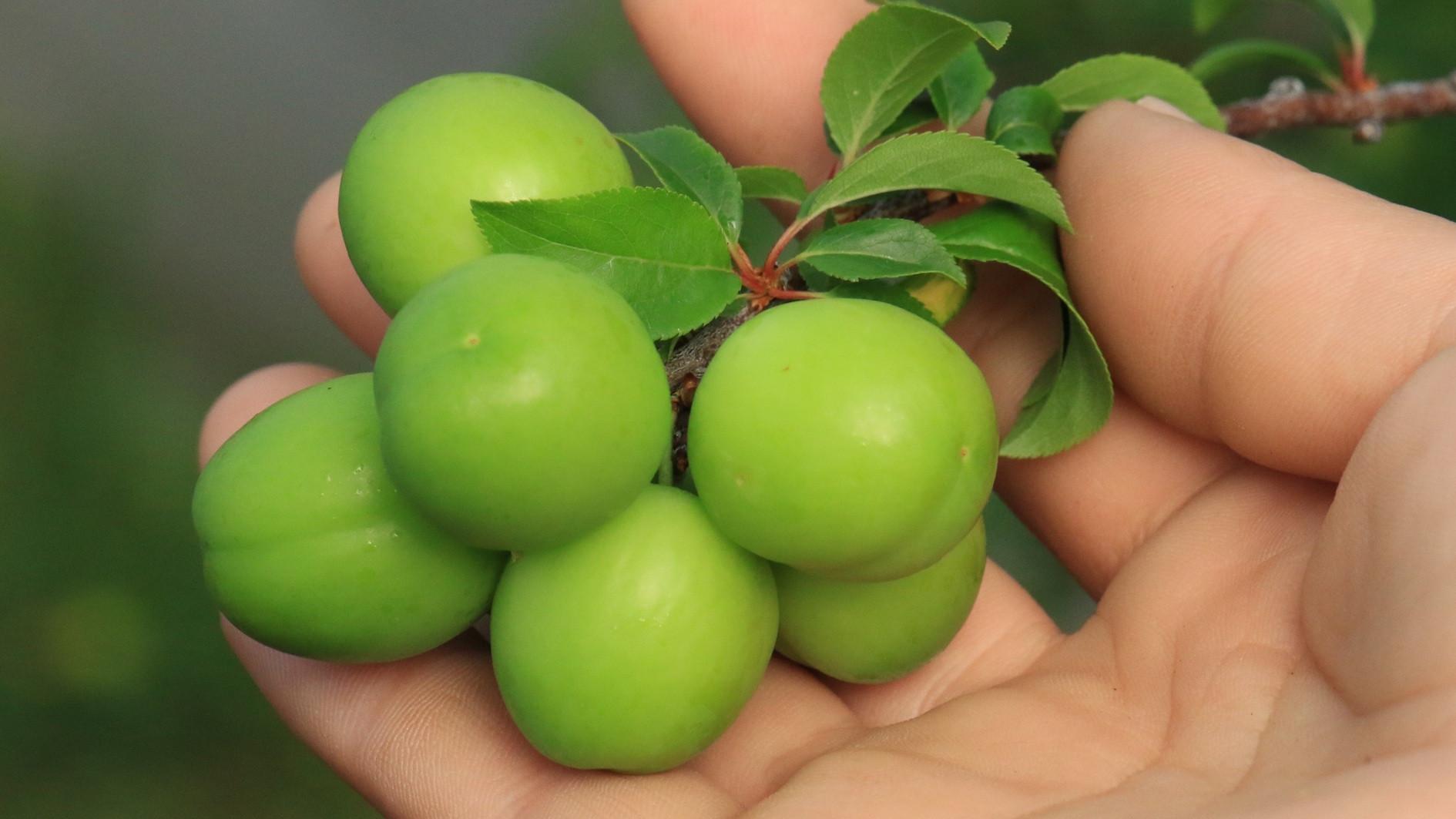
Greengages are now in their full season! This odd fruit is one of the peculiar addictions of Turkish people. A strange habit to understand for strangers, but when spring kicks in, people start craving for the unripe, sourish fruit, usually just eaten straight out of hand, almost always dipped in salt. When I was small, the greengage vendors would pop up in front of school gates, selling small paper bags of the stuff together with a little paper cone of salt. The pleasure of biting into the green flesh bursting with juice, dipping the bitten part into the salt in the tiny cone, and then devouring the whole fruit was pure joy, an unforgettable childhood memory of many. And it’s not only a kid thing. Grown-up men are sometimes heard bragging about drinking a whole bottle of rakı by only munching on a few, sometimes a single greengage to accompany the fiercely strong booze. When pregnant women crave for it out of season, it is a true crisis. The same happens when it is spring, you know it is just the season, but you’re living abroad. There seems to be nothing that matches it, no alternative, no ersatz fruit, to replace the juicy sour bite.
Greengages are basically unripe green plums. Frankly speaking, I have serious doubts that it is the right translation. What is called “Can Erik” in Turkish might not be the same fruit with greengages. There is no hint of sweetness, no particular alluring smell or aroma, just the sourness, juiciness, and the crispy firm flesh. Actually, it must be that juicy crisp mouthfeel that gave the fruit its Turkish name “Can” which means life, and “erik” is a generic name for any plum. It is a term also used for soul, spirit, or a loved one, which gives the plum an affectionate connotation. Bursting with the freshness of spring, the name provokes liveliness and youth. The appeal of Can Erik lasts only as long as its flesh is firm. When its color starts to bear hues of yellow and pink, and when the flesh no longer has that snappy firm crisp bite, it is over. As spring is short and ephemeral, so is the green plum. It is no longer the same fruit, and you can no longer associate it with “can” but rather simply call it “erik,” just as any plum with no particular significance.
By mid-May, the plum thing becomes even more confusing. There is another variety that pops up in the markets. An even bigger, greener and juicier variety is oddly named “Papaz Eriği,” meaning the “Priest’s Plum.” This variety is much sought after by fans, due to its more succulent, juicy bite, a tad less sour, but never sweet. Its appeal is also in its deeper green color, which strengthens its association with freshness, also its size makes it more attractive. When they appear in the market shining like big, glossy marbles, one is disarmed like a child who cannot resist glass marbles in a toy store. That is also the one that goes well with the strong spirit rakı, a few Papaz eriği dipped in salt, and every single bite will definitely be washed down with several sips of the anise-flavored drink. One might think that this must be the infidel connection in the name, it surely has something to do with the guilty pleasure of the juicy bites and sinful sips that go along so well together. Perfect pairing together, forever!
Recipe idea of the week:
Interestingly, though loved by the masses, green unripe plums are not much used in Turkish cuisine. If used. It is often to add a sour tang to dishes, always to savory ones, never and ever used in sweets, even in jams and preserves. For us, it is always associated with the savory, salty part of the kitchen. One very usual practice is to add it to the fresh vine leaf dolma dishes, especially the ones with meat and rice filling. Dolma means stuffed in Turkish, a generic name given to stuffed, wrapped or rolled dishes, the most famous made with fresh or brined vine leaves. When the vine leaf dolma rolls are placed in the pot, the plums are scattered generously in between the stacks of dolma in order to add that sour taste. The cooked plums end up in a saucy state, which can be served along with the dolmas. Another recent trend is to add chopped pieces to cacık, the yogurt-cucumber salad, it really works well with some fresh mint and a drizzle of extra virgin oil. I like to add them to olive oil braised vegetable dishes, especially to artichoke bottoms. Quarter artichoke bottoms, sauté briefly in olive oil, add a generous handful both of fresh garlic and spring onions, add also a handful or two of chopped green plums, add two teaspoons of sugar, and a teaspoon salt, add water barely to cover and simmer until artichokes are soft and very tender and all the cooking juices are reduced to almost none. Top with chopped fresh dill and a sprinkle of freshly grated lemon peel will elevate the freshness. The sourness of plums is just right for the artichokes, not as harsh as using lemon juice, and they end up in a pulpy sauce, which is nice when spooned over the artichokes. Believe me, it is a life-saving recipe, just as the name of the plum suggests!